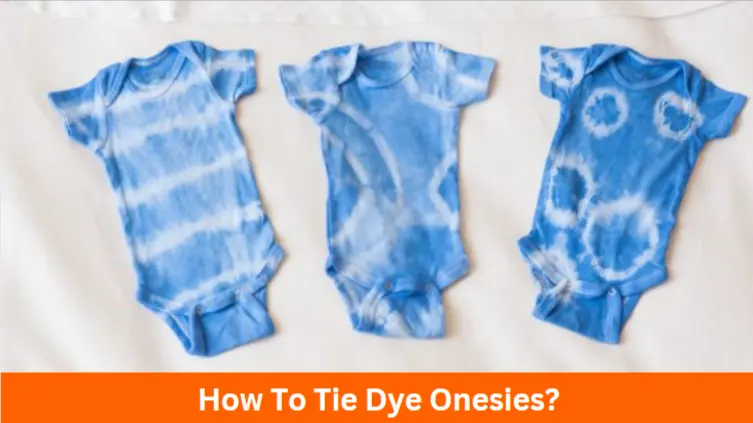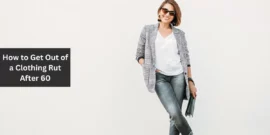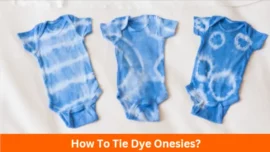Are you also looking for “How To Tie Dye Onesies?“
If yes, then this is the right place for you!
You can’t go wrong with tie dye if you’re seeking a fantastic method to add color to your child’s wardrobe or looking for the ideal DIY baby shower gift for a cute new mom. Onesies pushed to the back of your child’s dresser due to food stains can be given new life by tie-dying. Making tie-dyed clothing is a simple and entertaining activity for crafters of all skill levels, whether they are DIY enthusiasts or novices.
Here, in this blog, we will discuss in detail “How To Tie Dye Onesies?“
Table of Contents
Is it Safe to Tie Dye Onesies for Babies?
It is entirely safe to use Tie Dye Onesies in a simple sentence. If you prefer fiber-reactive dyes, then it is perfect.
Most fiber-reactive dyes are synthetic but non-toxic, do not need abrasive mordents, and permanently connect with the fabric. They become a part of the fabric when used, applied, rinsed, and washed adequately; therefore, they won’t rub off on your child.
Additionally, they cannot be chewed out, so your toddler won’t have a mouth the color of his clothes if you use them.
In reality, most of the clothing we purchase and wear, including onesies, is colored using fiber-reactive dyes.
It’s not a good idea to use synthetic cloth dyes. Since they frequently coat the fabric, your baby risks consuming dye if they chew on their clothing, which, let’s face it, is what babies do.
Stick to cellulose fibers and fiber-reactive colors, as this will work the best.
Materials required for the Tie Dye Onesies?
The following materials are essential to make the Tie Dye Onesies –
- White Gerber Onesies
- Tie-Dye (Prefer non-toxic dye)
- Plastic bag
- Paper towels
- Protective gloves
- Elastic bands
How To Tie Dye Onesies?
Here, we discuss in detail “How To Tie Dye Onesies?” Follow the below step, and you can make fantastic Tie Dye Onesies.
Step 1: At the very first, you have to wash and dry Gerber Onesies.
Step 2: Prepare your surface. Either move this project outside or make a work surface with it.
Step 3: Covering made of plastic. Add paper towels on the surface for further defense.
Step 4: The dye will color your clothing, which hopefully goes without saying. You can put on an art smock or some old clothes that you don’t mind getting dirty.
Step 5: The four colors should be prepared and selected. Just using two colors is an option if you’d rather.
Note – If you’re feeling incredibly creative, try blending some colors.
Step 6: Wear your gloves.
Step 7: Here, we will choose the Swirl Technique. Follow the below steps to do the following techniques :
- Make a flat spiral out of the fabric by pinching it.
- Use elastic bands to bind the spiral.
- Apply your dyes, switching up the colors for each region.
Step 8: Your colored Gerber Onesies should be placed in a plastic bag or covered with plastic wrap.
Step 9: Let it sit for 6–8 hours or longer for the brightest colors.
Step 10: Remove and thoroughly rinse with water to eliminate extra color.
Step 11: Get rid of the elastic band.
Step 12: The washer should be set to “big load,” with the warmest water recommended for fabric and a tiny amount of laundry soap added. Separate things should be washed and dried. Initially, wash each item individually.
Conclusion –
After reading this blog, now you can know “How To Tie Dye Onesies?” Here, in this blog, we have discussed the Swirl Technique. You can also do other techniques, but the process will be the same. This blog will help you to make cute Onesies.
Frequently Ask Questions (FAQs) –
-
Does tie dye work well on baby clothes?
When dyeing infant clothes, is it safe? Yes, provided the dye has been appropriately fixed, and any extra dye has been rinsed out of the object. Clothing that has been tie-dyed with a fiber-reactive dye, such as Procion MX, is necessary because babies prefer to chew and suck on anything.
-
What can’t you tie dye?
Petroleum-based materials are used to create synthetic fibers. Most synthetic fibers, including polyester, nylon, acrylic, and others, are plastic. They are shaped into long, thin filaments woven to form fabrics. They can’t be colored using the standard tie-dye technique because of their chemical makeup.
-
How long should the fabric be left to soak up tie-dye?
Allow the fabric to rest for 2 to 24 hours. Removing the stray color from the cloth will be simpler by washing it if you can leave the fabric out for longer. It is optional how long you leave the fabric out to dry. Let the fabric sit as long as your deadline will let if you’re pressed for time.
-
What’s the durability of tie-dye on clothing?
You can be confident that it won’t spoil your other garments after three or more washing. Before washing tie-dye t-shirts and other apparel, turn them inside out to prevent extra or loose colors from staining other clothing.
-
Do you use dry or wet fabric while tie-dying?
Before tie-dyeing, we often advise washing your fabric and leaving it damp because the dye absorbs the cloth more readily when it’s damp. However, you can add dye to dry fabric based on your method and the final appearance you desire. Ensure the cloth has been cleaned to get the sizing out (if it is new).
-
When tie-dying, do you wash it?
Allow the dye to sit. Please wait at least 24 hours before washing your clothing after it has been dyed. The more time the dye has to settle into the fabric, the longer you must wait. When you’re prepared to wash it, throw it in the washer alone or with other tie-dyed shirts of a similar hue.
-
How is tie-dye washed first?
So, only throw the shirt and some mild detergent in the washing for the first wash, at the very least. Washing the clothing in hot water will aid in securing the color in the fabric. Although your washer’s standard setting is OK, a peaceful setting is preferable.
Related Article:






